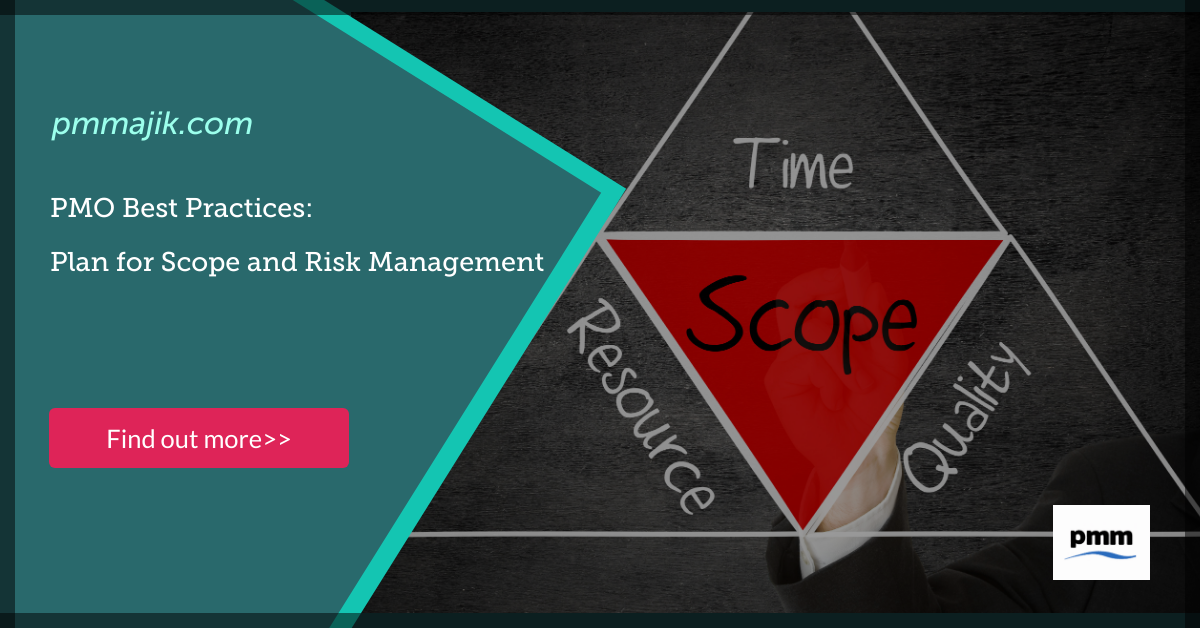A good project starts with strong planning, and your project management office (PMO) needs to make this a smooth process. In our series about PMO best practices, we’re going to look at how to plan for scope and risk management.
It’s almost inevitable that a project’s scope will change at some point in its lifecycle. With proper planning and an understanding of project risk, this can be managed so as not to derail the project delivery.
Here, we’re going to look at:
- What project scope management is
- How to manage and plan a project’s scope
- Why it will help you PMO
So you can make sure your office is focusing on the fundamentals and getting them right.
What is project scope and risk management?
You need to know what a project intends to do if you want to measure its success. Planning for the scope of a project and the potential risks involved will help your PMO clearly define what was expected and what gets delivered.
Scope management and planning will document things like the goals and tasks a project needs, what will be delivered, and how much and how long it will take.
When a project is well defined and that definition is agreed on across stakeholders, any changes to the scope or occurrences of risk will be much easier to cope with and integrate into the project plan.
How to plan for project scope management
Scope management is part of the wider project planning process. The end result of the process of planning the project scope is a project scope statement that includes:
- Objectives
- Deliverables
- Any exclusions
- Predicted constraints
- Assumptions
This information will make sure that everything possible is done to understand exactly what needs to be done, by who, by when, and how much it will cost.
There is a process that you can outline for your projects to follow, which will make sure the project scope statement is robust and takes into account a range of risks.
- Collect the requirements for the project by engaging with the stakeholders. You need to talk with the end-users, the person or company commissioning the project, the C-suite project sponsor, and anyone else who has a hand in what the project needs to deliver.
- Define the scope with a detailed plan of everything that needs to be achieved and how that is going to happen. It’s also important to capture what the project won’t be doing so that if a change comes along, you can clearly see that it’s not yet been planned.
- Plan the activities that are needed to get the scope of the project delivered. This will be a detailed list of what actions need to be taken and will go on to form part of the project schedule as well.
- Validate the scope with the project stakeholders so that everyone is on the same page. This is a chance for anyone involved to make adjustments as well as to get a full understanding of exactly what will be going into the project.
- Monitor and control the scope and use it to check any changes against it. When a risk arises, for example, you can check whether the challenge has been accounted for as part of the project scope.
Why is project scope and risk management important for a PMO?
Most PMOs are measured against the success of the projects they deliver; are on-time and on budget? By having a detailed scope from the very beginning, you can ensure that enough money and time is allocated to get the project done.
As well as hitting the key financial and time requirements, a strong scope will ensure that the deliverables are fit for purpose and so the stakeholders are happy with the result.
Having a strong plan for project scope and risk management will give the project that run through your office the best possible start.






